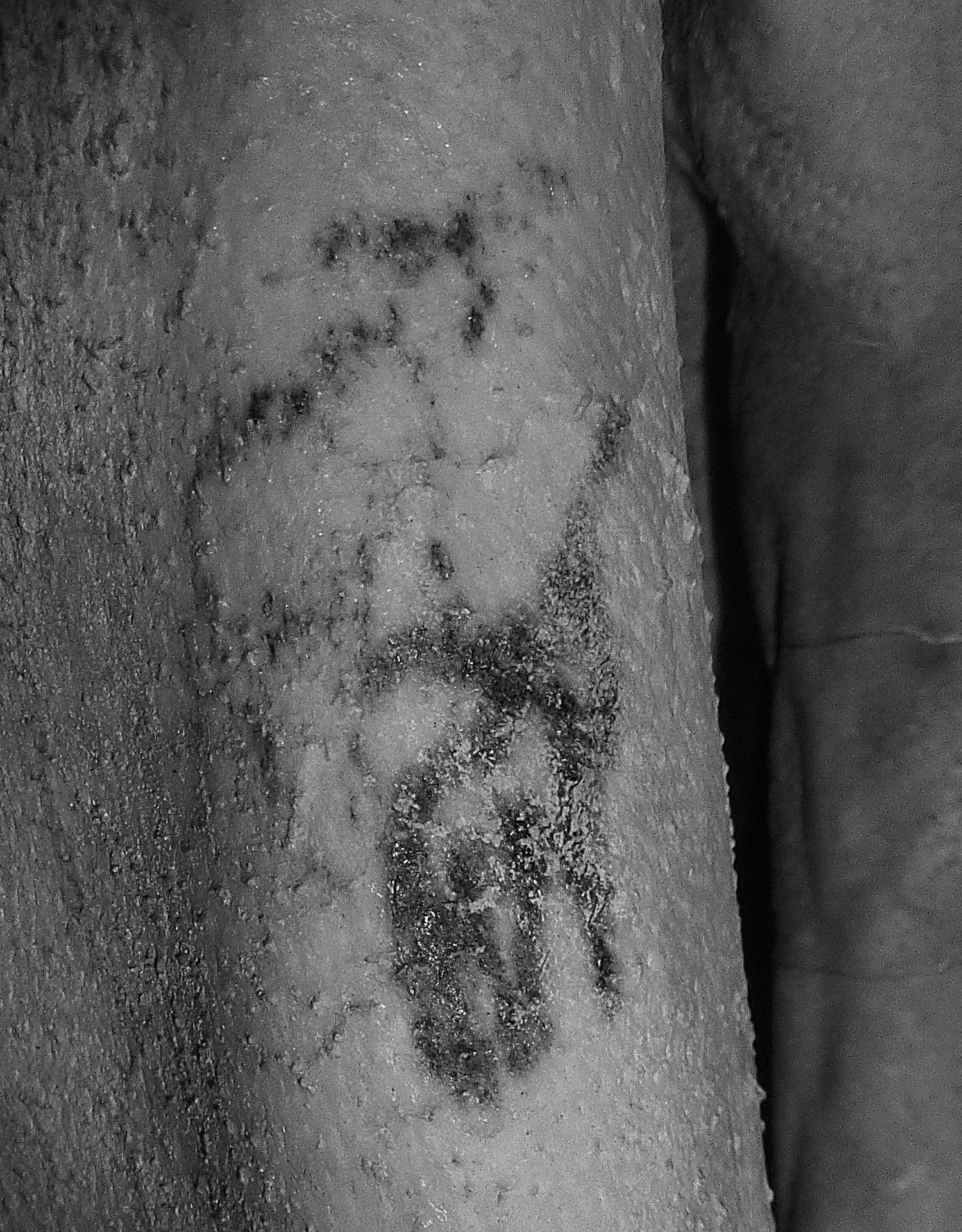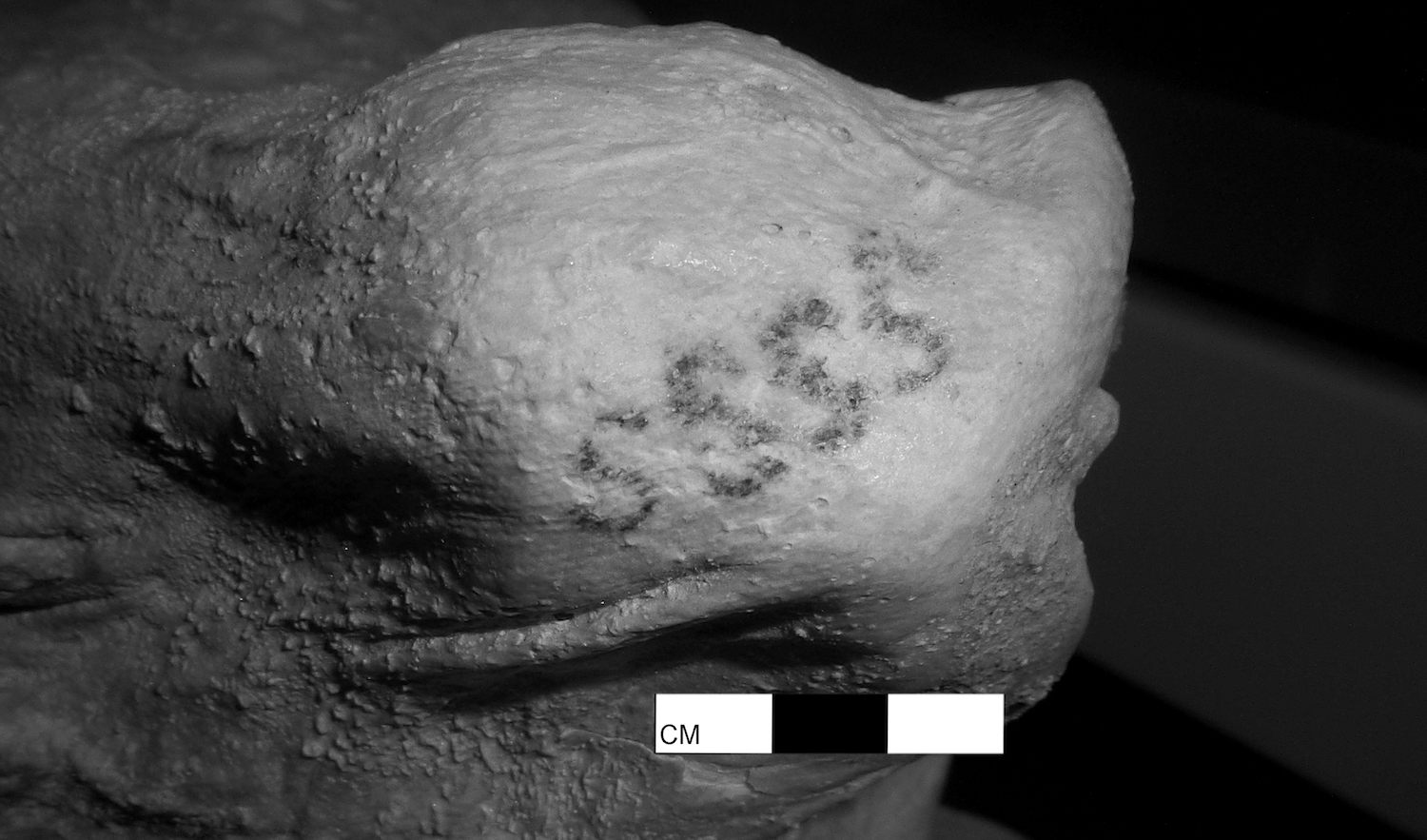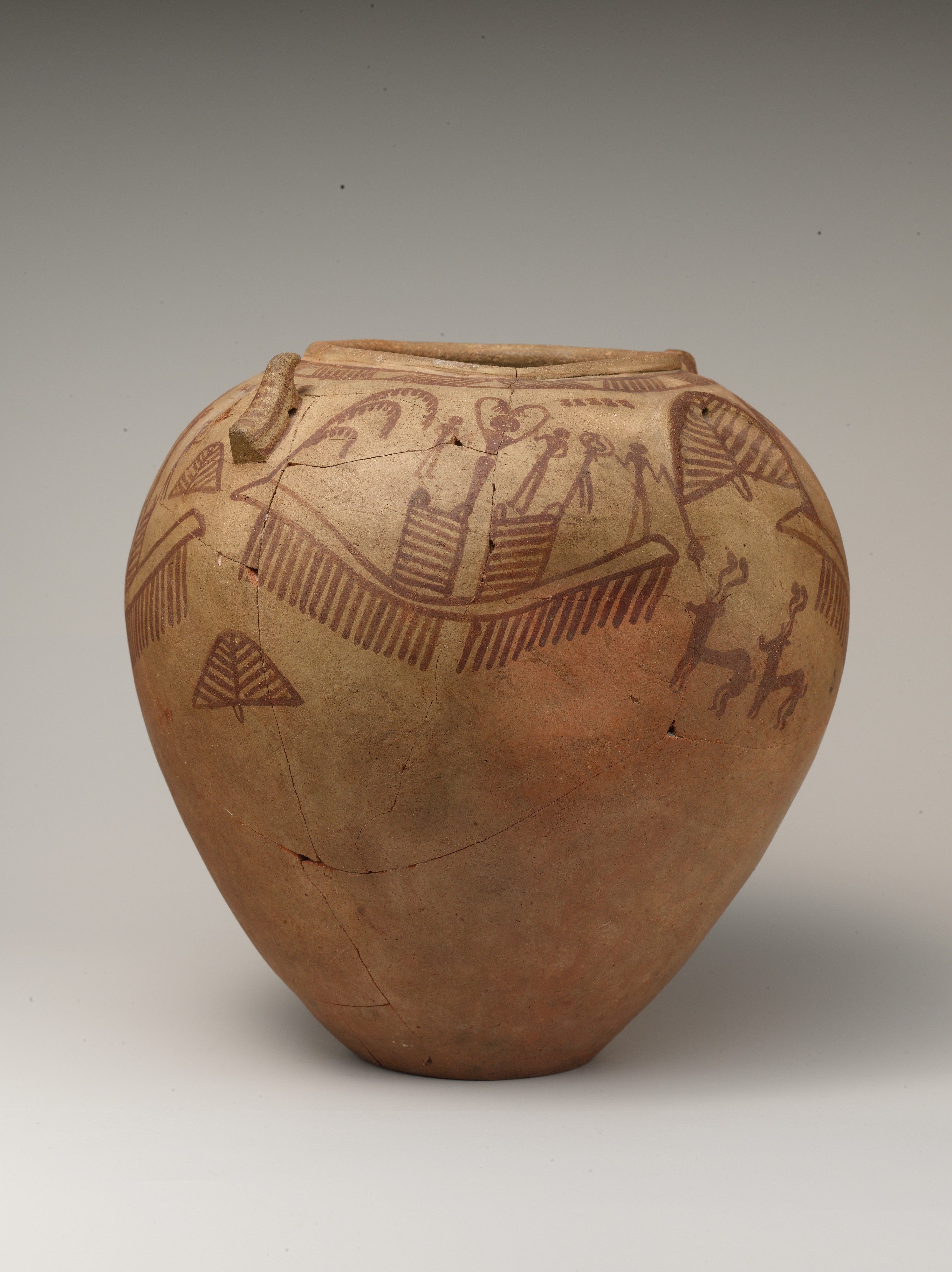Decoding the Tattoos of Ancient Egyptians
Here’s what the shapes and symbols on that mummy’s arm mean.

The average inhabitant of the modern world—frequenting both museums and the cinema—has come to expect a number of things of the preserved bodies of the ancient Egyptians: bandages, amulets, perhaps a funerary mask, dried skin, and sometimes both a malevolent disposition and an uncanny talent for moving slowly yet managing to surprise an often well-armed and presumably fleet-footed human quarry.
Lacking in all realistic Egyptian details, the most recent reboot of The Mummy (2017) inadvertently captured a feature that is indeed present on some (sadly immobile) mummies: tattoos. Tattooed priestesses were a reality in ancient Egyptian temples, and a new study of two ancient Egyptian bodies in the British Museum confirms that this practice (for men as well as women) began over 5,000 years ago. Even more remarkably, these newly discovered oldest figural tattoos reveal that the ancient Egyptians got inked for many of the same reasons as people do today.

For the past 100 years, a male Egyptian body on display in the British Museum has been an icon of modern perceptions of early society near the banks of the Nile River. This earliest phase of ancient Egypt is called “Predynastic,” because it predates the unification of Egypt in the First Dynasty, which occurred about 3100 B.C. The Predynastic man on display in London arrived (with assistance) at the British Museum at the turn of the last century and was accessioned in 1900 together with five other bodies that likely originated in southern Egypt (probably the site of Gebelein).
Radiocarbon dating—as well as other clues—suggest that the bodies date to the period between 3400 to 3100 B.C. He and his compatriots are not actually mummies, in the sense of an embalmed and wrapped corpse (the kind that get reanimated by the Scroll of Thoth and/or tana leaves in modern cinematic imaginings), but naturally mummified bodies. The sand in which they were buried dried the corpses, preserving them extraordinarily well, so well that their skin and hair are largely intact. What had escaped attention until a recent recording of the “mummies” with infrared photography is that two of the bodies—the famous Predynastic man and a contemporaneous woman—sported tattoos.

Snarling beasts and noble creatures have been popular motifs in tattoos across wide expanses of time and space, and the Predynastic Egyptian man was no different: he chose a barbary sheep and a bull for his upper right arm. While a sheep might not seem particularly fierce, bagging a barbary sheep (Ammotragus lervia) with just a bow and arrow—or more likely trapping one, considering the speed and precipice climbing abilities of the animals—was the ultimate in ancient Egyptian big game hunting. The bull is a more obvious symbol of power, and one that would later serve as an important icon of royal authority in Egypt. The woman has two tattoos on her upper right arm and shoulder: a vertical line with angled top (possibly a short staff or throwstick) and a series of S-shapes. Taken alone, this new evidence for tattooing arts in early Egypt is interesting, but within the larger context of Egyptian art from between 3500 and 3100 B.C., it is remarkable.

To discover the meaning of the tattoos, we must seek parallel images in other (non-skin) media, and our first stop are the deserts to the east and west of the Nile River, particularly the area between modern-day Luxor and Abu Simbel. In these deserts, Predynastic travelers left thousands of rock inscriptions, often termed “graffiti,” although in an ancient Egyptian context, the word bears none of the modern connotations of vandalism; the inscriptions cluster along ancient highways (rather than randomly distributed throughout the landscape), precisely so they could be seen by future visitors. The Predynastic “graffiti” artists did not merely illustrate what they saw along the desert roads, but rather focused on animals with symbolic significance. And here we come back to the barbary sheep and the bulls—animals that appear frequently in the rock art, signifying elite hunting and earthly power.

Much of the imagery in Predynastic Egyptian art focuses on animals that were exotic or uncommonly difficult to hunt: among them, addax, giraffes, elephants, crocodiles, and hippopotamuses. In the rock art, hunters could even wear images of a successful expedition—harpooned hippopotamuses on the chest of one hunter could be part of a decorated garment or even tattoos.

No group had to hunt a barbary sheep or a hippopotamus to survive—but a successful capture or kill of such an animal revealed exceptional hunting skills. Perhaps it is these skills that the man in the British Museum sought to immortalize through the combination of an animal of power—the bull—and an animal whose capture symbolized hunting prowess—the barbary sheep. The style of the man’s tattoos is very similar to what we see in contemporaneous rock art, and in an Egyptian context, this is not surprising, since hieroglyphic texts can use the same verb to refer both to carving into stone and tattooing a human body.

Those enigmatic S-shapes and possible staff on the tattooed woman are another key piece in this ancient puzzle. The S-shapes appear on decorated ceramic vessels common in Predynastic burials beginning shortly after 3500 B.C., and—here the parallels get down-right amazing—those shapes frequently appear in the context of imagery depicting a woman presiding over sacrificial animals. The women, most often shown in a dance pose and larger than their male companions, appear to be ritualists whose performances and gestures accompanied the ritual slaughter of desert game, translating the power of the living creatures into the provisions consumed by gods and humans. Predynastic figurines of women, sometimes shown in similar dance poses, can have body art, including in at least two cases, a barbary sheep. The female figurines, the women on the decorated ceramics, and most likely, the tattooed woman in the British Museum embodied the dualities of sacrifice and ritual celebration, death and life.

Between 3500 and 3100 B.C., as society became more complex in southern Egypt, iconography in these various media—clay, stone, and skin—focused on elite hunting, the capture of big game of both the Nilotic and desert worlds, intended ultimately for sacrifice in a temple complex. In these sacrifices, men and women—both possibly tattooed with images relating to their ritual roles—were not just meat offerings for the gods, but were the way in which the ancient Egyptians maintained cosmic equilibrium. Adorned with these indelible images, the body becomes a reflection of the landscape and canvas for ritual imagery, allowing the bearers of the tattoos to mediate opposing forces of desert and Nile for eternity.
In later Egyptian history, tattoos would continue to function in the same way, with some spectacular examples including amuletic and divine images. As the newly discovered Predynastic tattooed individuals reveal, permanent bodily adornments can express an individual’s role in the larger world, as man or woman, hunter or priestess—tattoos in ancient Egypt, just as today, reveal the skin as a surface that reflects the inner person.








Follow us on Twitter to get the latest on the world's hidden wonders.
Like us on Facebook to get the latest on the world's hidden wonders.
Follow us on Twitter Like us on Facebook